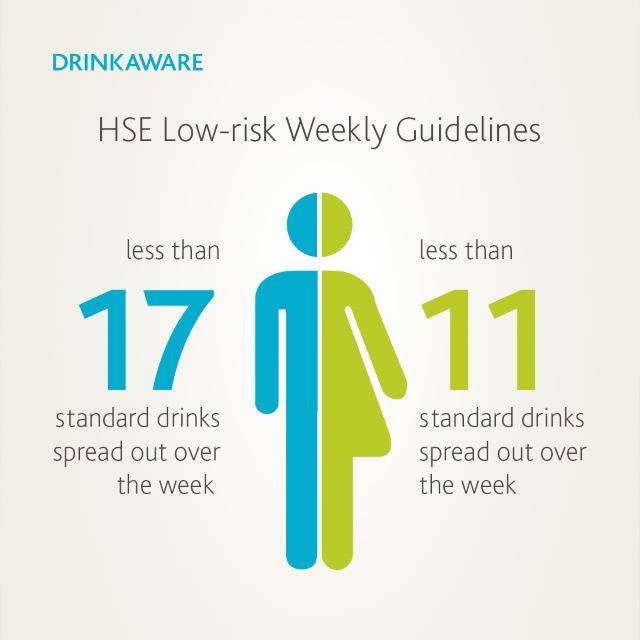As the national charity working to prevent and reduce alcohol misuse in Ireland, Drinkaware welcomes the recently announced review of the low-risk weekly alcohol guidelines, and has offered its support of same in its submissions to the Oireachtas Health Committee and various public consultations on related topics in recent months.
Much of Drinkaware’s work centres around providing the public with information that supports positive attitude and behaviour change with regard to alcohol. This includes the low-risk weekly guidelines, and specifically how they relate to supporting people’s understanding of their consumption, alcohol harms and risky drinking behaviours.
To change behaviour people, need knowledge, motivation and capacity. The low-risk weekly alcohol guidelines are an obvious starting point.
The importance and value of the guidelines is threefold:
- They offer clarity on a subject that uses an array of terms – risky, light, moderate, heavy, hazardous, harmful – that whilst technically and medically descriptive, are not easily understood or resonate with the public.
- The number of adults who drink on a weekly basis has risen in the last two years (44% in 2019, 52% in 2020, 55% in 2021)
- There is a substantial number of adult drinkers who say they would follow the guidelines (42%) if they knew them.
Lack of awareness of the low-risk weekly alcohol guidelines
The stark lack of public awareness of the guidelines (less than 3% of the public can identify them) is the crux of the challenge. The public has a right to know, and needs to understand what low-risk versus risky drinking looks like. Simply changing the guidelines in no way guarantees that the public will garner greater awareness and understanding of their alcohol consumption.
Drinking in the home
The review of the guidelines is arguably overdue given that this last happened in 2009. But it’s also seen by many as timely because of the increase in at-home drinking owing to Covid-related restrictions. However, to assume this is a Covid-induced behaviour shift is dangerously misleading. The drinking at home trend actually pre-dates the pandemic – the 2019 Drinkaware Index found 62% of drinking occasions were happening in the home, and the “Understanding binge drinking at home” (2020) elucidates the why as well as the repercussions of this now well-established practice.
As reflected in the “Understanding binge drinking at home” study, too often the narrative on alcohol is polarised, talking about those who are dependent, versus the rest of the drinking population. But as the data shows, the latter makes up 4% and the rest can be divided between those drinking within the guidelines (52%) those drinking at the cusp of the guidelines at increasing risk (23%) and those drinking above the guidelines and at risk of experiencing harm in the future (21%).
Communication of the guidelines is key
From our hundreds of thousands of engagements and communications with the public every year, Drinkaware understands their perspective and the emerging and very evident shift in people’s interest and intent to drink differently which includes an appreciation of the barriers and enablers to people achieving this positive goal. Alcohol cannot be viewed or discussed in isolation. Too narrow a view of Irish society’s relationship with alcohol, runs the risk of over-simplifying the issue to one of consumption only, and any review of the guidelines must take care not to constrict the context but instead to reflect the lived experience.
Drinkaware has no specific recommendation on the content of the guidelines. But we do have a clear sight of the context in which they sit and would encourage those reviewing them to maximise this opportunity to utilise all available insight, experience and data, to engender greater understanding and uptake by the public.
To be effective, guidelines of any sort, need to be uncomplicated, relevant and well communicated. Consistently and across all settings. They cannot live passively on a website, but rather must be pushed, promoted and explained to the public, in an inclusive and accessible way because sustainable behaviour change, is a journey as much as a destination.
References:
The Drinkaware Barometer is a national population-based survey of 1,000 adults aged 18+ conducted by Behaviour and Attitudes in May 2021 and included a series of internationally recognised modules relating to alcohol consumption and mental health. For more information on research projects and publications visit: drinkaware.ie/research/
Understanding (intentional/unintentional) binge drinking in the home


